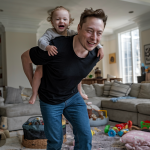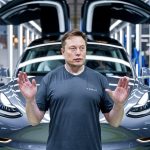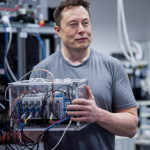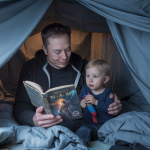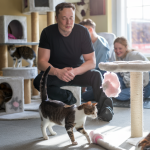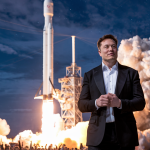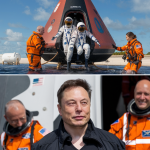SpaceX Tests Reusable Rocket Booster: Musk’s Latest Leap Could Slash Space Travel Costs

The Test: Super Heavy Booster Takes Center Stage
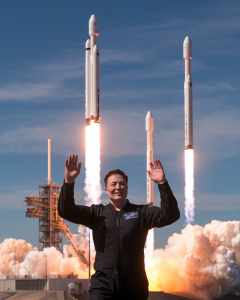
The sun had barely risen over Boca Chica when SpaceX’s Starbase erupted in a symphony of flame and thunder. At 6:45 AM PDT on April 9, 2025, the Super Heavy booster—serial number B14—stood tall on its launch mount, its 33 methane-fueled Raptor engines igniting in a static fire test that shook the ground for miles. This wasn’t a launch, but a critical health check: all engines roared in unison for 10 seconds, a plume of exhaust billowing into the Texas sky. Musk, pacing nearby, cracked a rare grin as telemetry confirmed success—29 of those engines were flight-proven, having flown on Flight 7 in January.
This booster isn’t new. It’s a veteran, caught mid-air by Starbase’s “chopstick” arms during its last outing, refurbished in record time, and now prepping for Flight 9. Posts on X captured the moment: “Booster 14’s alive again—this is reusability on steroids!” and “Musk’s making spaceflight look easy.” The test’s goal? Prove this beast can fly again, fast, with minimal touch-up—SpaceX calls it “zero-touch reflight.” If it works, the cost of hurling payloads into orbit could plummet, and that’s the game-changer everyone’s talking about.
Why Reusability Matters: The Cost-Cutting Holy Grail
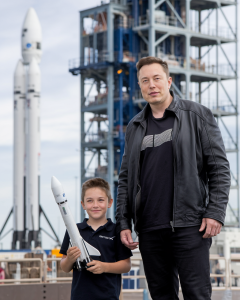
Space travel’s always had a dirty secret: it’s insanely expensive because rockets are disposable. A traditional launch—like NASA’s old Saturn V or even rival United Launch Alliance’s Atlas V—burns through $100 million or more, with the rocket ending up as space junk or ocean debris. Musk’s hated that waste since SpaceX’s founding in 2002. “It’s like throwing away a 747 after every flight,” he’s said, and he’s right—imagine air travel costs if planes were single-use.
Enter reusability. SpaceX cracked the code with Falcon 9, landing boosters since 2015 and flying some 20+ times by 2025. But Super Heavy, the backbone of the Starship system, is the real prize. At 230 feet tall and 16 million pounds of thrust, it’s the most powerful booster ever built. Musk claims a new Super Heavy costs $50-70 million to build, but refurbishing one—like B14—drops to under $5 million, per his 2023 X posts. Fly it three times, and you’re at $15 million per launch; fly it 10, and it’s pennies on the dollar—maybe $5-10 million. Compare that to NASA’s Space Launch System (SLS), clocking in at $4 billion per shot, and you see why this test has jaws dropping.
The Numbers: How Cheap Could Space Travel Get?

Let’s break it down. Falcon 9 launches cost $67 million today, per SpaceX’s site, hauling 50,000 pounds to low Earth orbit (LEO)—about $1,340 per pound. Starship, fullyReusable, aims for 330,000 pounds to LEO. If Musk hits his $10 million launch target—wildly optimistic but not impossible—that’s $30 per pound. Even at $50 million, it’s $150 per pound—a 90% drop from Falcon 9 and a fraction of rivals’ $5,000-$10,000 per pound. X users geek out: “$30/kg to orbit? That’s asteroid mining territory!” and “Musk’s turning space into a budget airline.”
The kicker? Super Heavy’s reuse cuts turnaround time. Falcon 9’s best is 21 days; Starship’s aiming for days—or hours—with “chopstick” catches skipping complex recovery ops. More flights, lower costs, bigger payloads—it’s a virtuous cycle Musk’s betting will unlock space for satellites, moon bases, and his Mars obsession.
The Tech: Super Heavy’s Reusable Magic
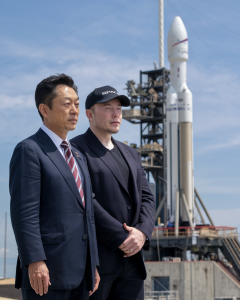
How’s it work? Super Heavy’s a beast of steel and methane, designed to lift Starship—crew, cargo, and all—into orbit. Its 33 Raptors, twice as powerful as Falcon 9’s Merlins, gulp sub-cooled liquid oxygen and methane, a combo Musk loves for Mars refueling. After launch, it separates at 40 miles up, flips, and fires engines to slow its fall. On Flight 7, it nailed a mid-air catch by Starbase’s tower arms—sci-fi stuff made real. Today’s test showed those engines still purr after refurbishment, a feat requiring SpaceX’s obsessive engineering.
The April 9 static fire wasn’t flashy—no soaring into orbit—but it’s the grunt work of reusability. SpaceX swapped a few Raptors, patched heat shields, and ran diagnostics, all in under three months since Flight 7. “Refurb’s under 10% of new-build cost,” Musk tweeted post-test, hinting at a lean process. If B14 lifts off again soon—say, Flight 9 in May—it’ll be the first Super Heavy reused, proving Musk’s “test it, fix it, fly it” mantra scales to the big leagues.
Musk’s Vision: From Texas to Mars

Why’s Musk so obsessed? It’s not just about cash—though SpaceX’s $350 billion valuation loves it. It’s Mars. He’s said since 2002 that humanity needs to be multiplanetary, and cheap launches are the ticket. Starship’s designed to haul 100 people or 150 tons to the Red Planet, but at current costs, that’s a trillion-dollar pipe dream. Slash launches to $10 million, and a million-person Mars colony by 2050—his wild goal—starts looking feasible. “Reusability’s the pivot,” he told X in 2024. “No one’s settling Mars with throwaway rockets.”
Closer to home, this test fuels NASA’s Artemis program, where SpaceX’s got two Starships booked to land astronauts on the moon by 2028. Cheaper boosters mean more cash for science—think lunar bases or Europa probes. X buzzes with speculation: “Moon first, Mars next—Musk’s rewriting space history.”
The Stakes: SpaceX vs. the World
SpaceX isn’t alone. Blue Origin’s New Glenn, Jeff Bezos’ reusable rival, hit orbit in January 2025, though its booster splashed down hard. China’s Long March 9 looms, but it’s expendable and years off. SpaceX’s edge? It’s flown Falcon 9 100+ times, landed boosters 63 times, and now caught Super Heavy twice—nobody’s close. The April test builds on Flight 7’s catch, showing reuse isn’t a fluke but a system.
Rivals scoff—United Launch Alliance once called reusability a “gimmick”—but SpaceX’s $67 million Falcon 9 price tag undercuts their $165 million Atlas V. Super Heavy’s scale could bury them. Analysts on X predict: “If Starship hits $50M/launch, it’s game over for expendables.” Lower costs could flood space with Starlink satellites, asteroid miners, or space tourists—industries Musk’s itching to ignite.
Challenges: Rockets Aren’t Airplanes Yet
It’s not all smooth skies. Reusability’s tough—rockets hit hypersonic speeds, scorching heat, and brutal stress. Flight 8 in March 2025 saw Starship’s upper stage tumble and explode, a reminder failures lurk. B14’s test was clean, but scaling to 10, 20, or 100 flights means perfecting refurbishment—SpaceX’s admitted engines occasionally choke on debris. Musk’s “no obvious limit” claim on X raises eyebrows; Falcon 9’s record is 23 flights, but Super Heavy’s heftier.
The FAA’s another hurdle. Post-Flight 7, it fined SpaceX $633,000 for permit slips, and environmental reviews slow launches. April’s test dodged delays, but scaling to dozens of flights yearly—key to cost cuts—means more red tape. X users vent: “FAA’s grounding Musk while he’s saving space travel!”
The Ripple Effect: A Cheaper, Busier Cosmos
If SpaceX nails this, space gets wild. At $150 per pound, launching a 1-ton satellite drops from $10 million to $300,000—chump change for telecoms or startups. NASA could fling rovers everywhere; Musk’s Starlink, already 5,500 satellites strong, could double overnight. Point-to-point Earth travel—LA to Tokyo in 30 minutes—edges closer, though methane emissions worry greens. X dreams big: “Space factories, lunar hotels—Musk’s opening the floodgates.”
For Maria’s kids from our Green Homes story—or Sita crossing her bridge—this means a future where space isn’t a billionaire’s playground. Cheaper launches could fund schools, clinics, or jobs tied to a booming space economy. Musk’s not just testing a booster; he’s testing a world where space is for all.
The Road Ahead: Flight 9 and Beyond
Next up? Flight 9, slated for May 2025, aims to reuse B14 fully—launch, catch, repeat. Success would mark Super Heavy’s first reflight, cementസ് pace—a feat Falcon 9 never matched till 2015. SpaceX wants “zero-touch” by 2026—booster to pad in hours. Musk’s endgame? A $2 million Starship launch, per his 2022 X vow. X cheers: “Elon’s turning sci-fi into reality, one test at a time.”
This April 9 test isn’t the finish line—it’s a mile marker. If Musk pulls this off, space travel costs could crash, opening the cosmos like never before. From Texas dirt to Martian dreams, this reusable rocket booster’s rewriting the rules—and we’re all along for the ride.
